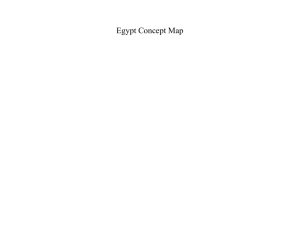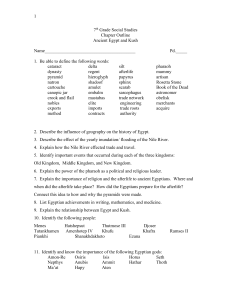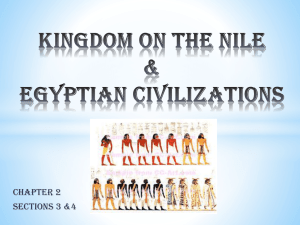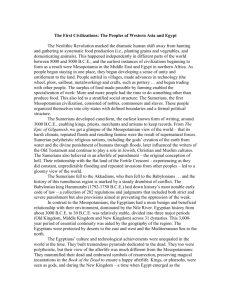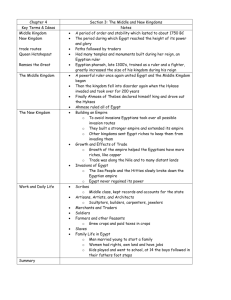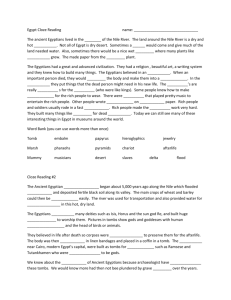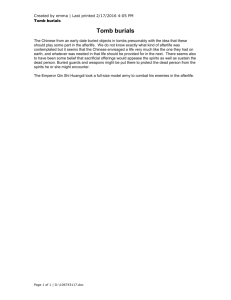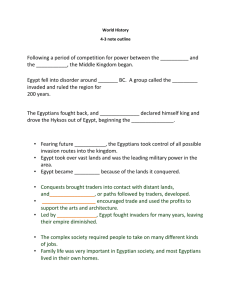Lecture outline
advertisement
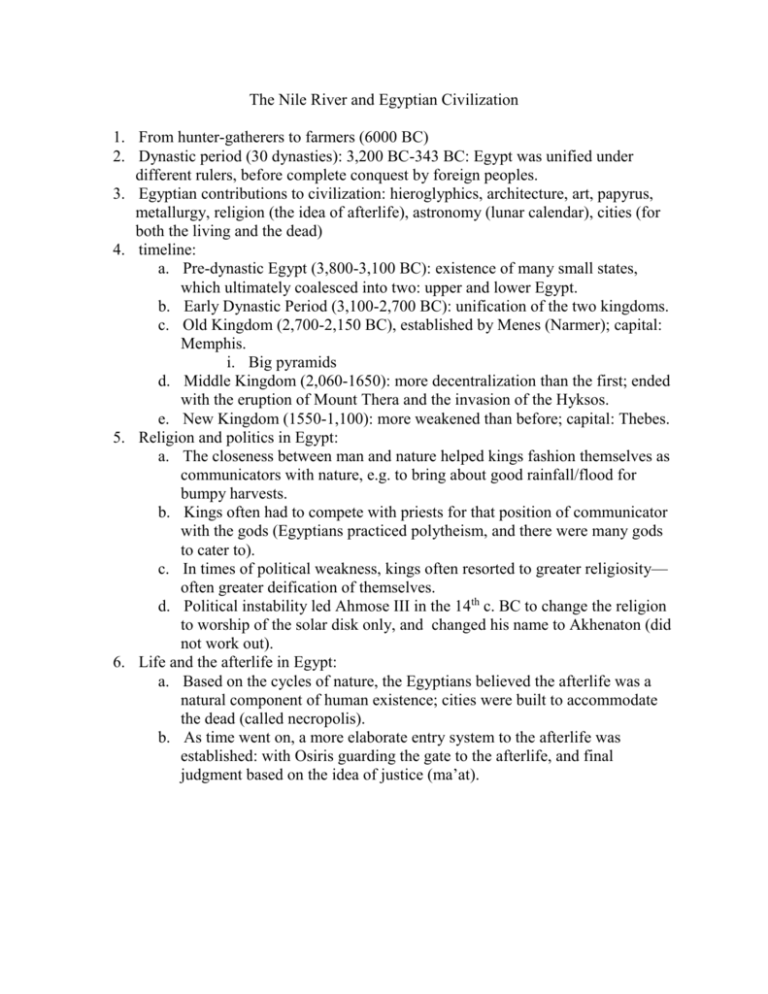
The Nile River and Egyptian Civilization 1. From hunter-gatherers to farmers (6000 BC) 2. Dynastic period (30 dynasties): 3,200 BC-343 BC: Egypt was unified under different rulers, before complete conquest by foreign peoples. 3. Egyptian contributions to civilization: hieroglyphics, architecture, art, papyrus, metallurgy, religion (the idea of afterlife), astronomy (lunar calendar), cities (for both the living and the dead) 4. timeline: a. Pre-dynastic Egypt (3,800-3,100 BC): existence of many small states, which ultimately coalesced into two: upper and lower Egypt. b. Early Dynastic Period (3,100-2,700 BC): unification of the two kingdoms. c. Old Kingdom (2,700-2,150 BC), established by Menes (Narmer); capital: Memphis. i. Big pyramids d. Middle Kingdom (2,060-1650): more decentralization than the first; ended with the eruption of Mount Thera and the invasion of the Hyksos. e. New Kingdom (1550-1,100): more weakened than before; capital: Thebes. 5. Religion and politics in Egypt: a. The closeness between man and nature helped kings fashion themselves as communicators with nature, e.g. to bring about good rainfall/flood for bumpy harvests. b. Kings often had to compete with priests for that position of communicator with the gods (Egyptians practiced polytheism, and there were many gods to cater to). c. In times of political weakness, kings often resorted to greater religiosity— often greater deification of themselves. d. Political instability led Ahmose III in the 14th c. BC to change the religion to worship of the solar disk only, and changed his name to Akhenaton (did not work out). 6. Life and the afterlife in Egypt: a. Based on the cycles of nature, the Egyptians believed the afterlife was a natural component of human existence; cities were built to accommodate the dead (called necropolis). b. As time went on, a more elaborate entry system to the afterlife was established: with Osiris guarding the gate to the afterlife, and final judgment based on the idea of justice (ma’at).
